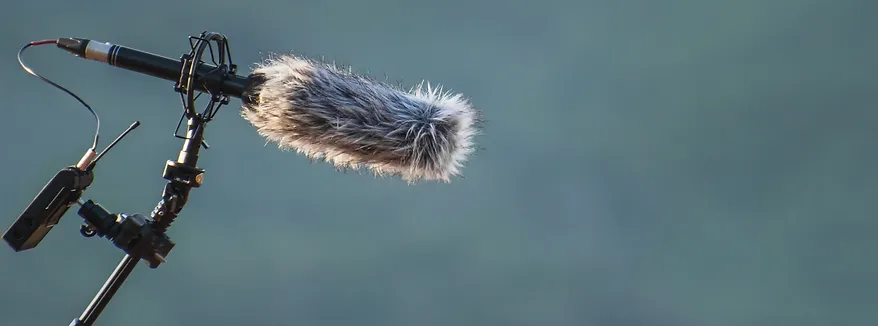Jose Manuel Flores
Sound aesthetics explores the beauty, perception, and artistic qualities inherent in sound. It delves into the sensory experience of sound, investigating how various elements—such as pitch, timbre, rhythm, and spatial qualities—affect our emotional responses and interpretations. This field embraces the subjective nature of sound, examining how it evokes emotions, shapes narratives, and contributes to our understanding of art, music, film, and the wider sonic environment. Sound aesthetics invites us to explore the intricate interplay between the technical aspects of sound and the profound emotional and aesthetic impact it holds in our lives and artistic expressions. It is well known that sound and semiotics explore the relationship between sound and meaning, focusing on how sound functions as a system of signs and symbols within a cultural or communicative context. For example, Eco (1986) proposed that music’s semiotic system primarily embodies syntax, displaying a structural framework without immediately evident semantic depth. He suggested that deeper semantic significance emerges through interpreting melody as a fusion of sound and lyrics, engaging with notes, vocal or musical expressions, and rhythm. Music encapsulates mathematical values and is delineated through oscillographic or spectrographic measurements depicted on the musical staff. According to Peircean’s theory, musical notes act as symbols representing sounds. In sound design, the musical staff visually mirrors the sounds emitted, establishing a direct correlation between music compositions. On the other hand, there are several authors and scholars who have contributed significantly to discussions and writings about sound aesthetics.
R. Murray Schafer: Known for his work in acoustic ecology, Schafer discusses the aesthetic dimensions of soundscapes and the environmental aspects of sound in his book “The Soundscape: Our Sonic Environment and the Tuning of the World.” Jonathan Sterne: A prominent figure in sound studies, Sterne explores the cultural, historical, and technological aspects of sound, including its aesthetics, in works like “The Audible Past: Cultural Origins of Sound Reproduction” and “MP3: The Meaning of a Format.” Brian Kane: His book “Sound Unseen: Acousmatic Sound in Theory and Practice” explores the aesthetic and philosophical dimensions of acousmatic sound (sound heard without seeing its source), delving into its artistic and perceptual aspects. Salomé Voegelin: Voegelin’s works, including “Listening to Noise and Silence: Towards a Philosophy of Sound Art” and “Sonic Possible Worlds: Hearing the Continuum of Sound,” engage with sound art, aesthetics, and the philosophical implications of sonic experiences. Michael Bull: Author of “Sound Moves: iPod Culture and Urban Experience,” Bull discusses the aesthetic dimensions of everyday sound experiences, particularly in urban environments and mediated through technology. Steven Connor: Known for writings that touch on sound aesthetics among various other topics, Connor has explored the cultural, historical, and philosophical aspects of sound in works like “The Book of Skin” and “Dumbstruck: A Cultural History of Ventriloquism.” These scholars offer diverse perspectives and insights into the aesthetic dimensions of sound, ranging from environmental soundscapes to sonic art, music, and the philosophical implications of auditory experiences.
As a way to analyze sound aesthetics, I rely on the methodological approach “Octadic Model” for the cultural exchanges of Mandoki (2006). Two coordinates are identified; rhetoric and its records; and the dramatic and its modalities. In the first, the registers are lexicon, acoustic, somatic, and scopic. In the second the modalities are proxemic, kinetic, emphatic, and fluxion. Processes of substitution or conversion, equivalence, and continuity in the relationships that the subject establishes with himself, with others, and with his environment through statements that put individual and group identities into play in terms of valorizing (Mandoki, 2006). It speaks of experience and in fact, is the most important, in the sense of social interaction intrinsically associated with sensitivity. The records of Mandoki’s rhetoric are based on the Ciceronian categories, inventio (what is chosen to say), dispositio (the way in which the statement is made), elocutio (how it is presented), memory (what it is linked to), and pronuntiatio or actio (the tone and bearing of the body). From this starting point, the first group is composed to analyze the prosaic established by the registers: lexicon, somatic, acoustic, and scopic.
The channels of exchange of aesthetic statements evident in cinematography are correlated starting with the scopic record that refers to the visual, in this case to the set design, costumes, props, and so on. In this sense, in the film image, interaction can be associated with the way that the message is broadcast and captured by the audience. However, behind this framework operates an articulation and configuration that leads to the connotation and denotation of the message where a semiotic is linked to the aesthetic value through the cinematographic sequences. The somatic register prevails through the corporal display of the actants, their movements, and even their gestures, like a smile that can constitute a facial expression that denotes kindness. The cinematographic image is accompanied by acoustic records such as narration, dialogues, the soundtrack, and the voice-over. On the other hand, the dramatic and its modalities are proxemic, kinetic, emphatic, and fluxion. Mandoki explains that proxemics comes from the Latin proximitas, which means closeness. The term was proposed by Edward Hall to designate the use of space between individuals determined by cultural conventions.
In cinematography, proxemics originate in different ways. One of these is through the different planes and frames, in which the camera movements approach the actants and other elements that make up the photography of the scenes. Another way is through the main medium, the screen, which is where a window of allegorical, metaphorical, and polysemic possibilities that establish proxemics opens up. Intrinsically, the dramatic modality called kinetics is presented. It refers to the dynamism, stability, and solidity of the syntagmas in each record — the camera movements constituted by different planes that look for the contemplative act of hearing. Likewise, it refers to the dynamism in how the different rhetorical figures generated by alliteration are presented, saturated phrases that run through the screen, and that strengthen the message emitted by the scenes. Additionally, the emphatic is noted at the beginning of each plane where musicalization supports the emphatic register and gives intensity and emphasis to the images. In a general way, the dramatic modality of opening or closing through syntagma originates with fluxion. The flow of scenes or planes about the musical sequence marks the entrance and exit of audiovisual discourses. In cinematography, the images flow in such a way that they cross the screen in search of social exchange, an aesthetic exchange. In this sense, we can understand that soundscapes through cinema are a medium with aesthetic approaches where a rhetorical situation is established with the possibility of unleashing a series of meanings, based on the experience of the viewer.







